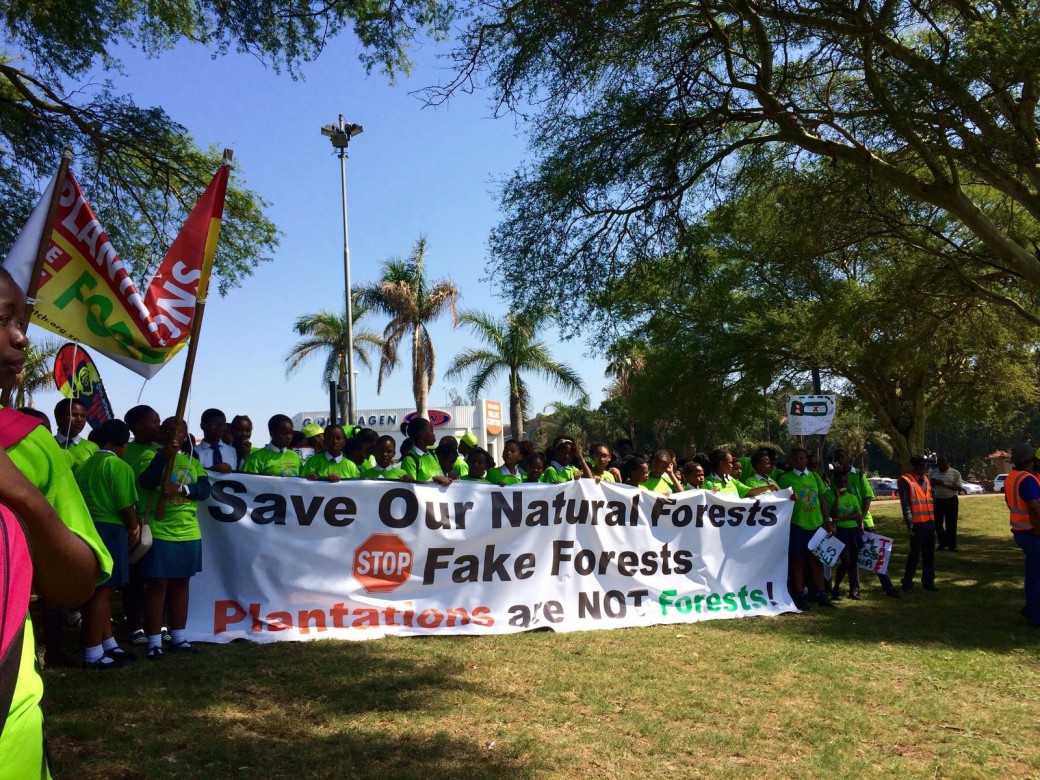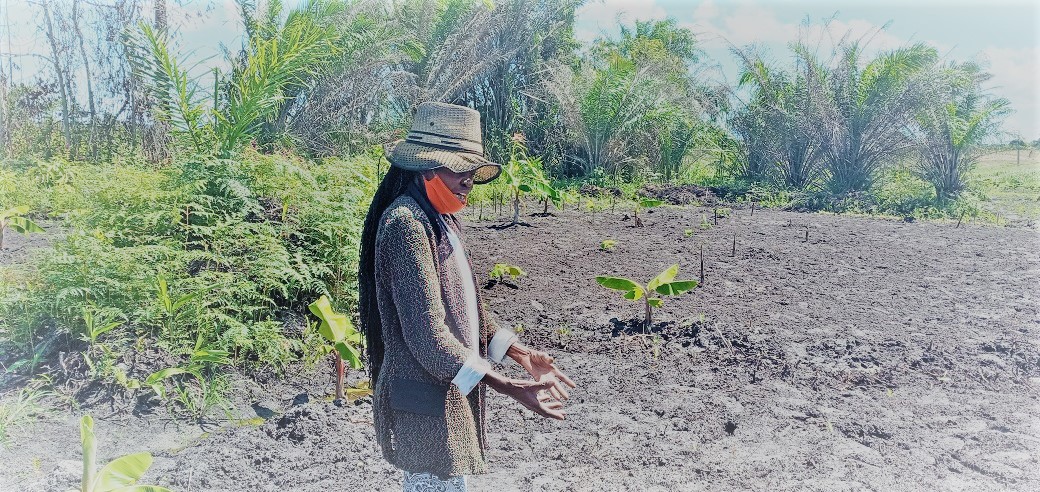A congress in which the trees vanquish the forest

By Miguel Lovera*
Earlier this year, I was invited to give a keynote speech at the World Forestry Congress (WFC), an event organised by the FAO every six years. The theme for this session, which took place in Durban from 7th to 11th of September this year was ‘Forests and People: Investing in a Sustainable Future’. Later in the year, as the dates for the WFC approached, what was first an invitation to address the session with a keynote speech became participation in a panel discussion based on the questions below.
- How should we define investments in forests, including in assets, human capital, knowledge and resources?
When we hear the term ‘investment’ we tend to think of money. But forests do not need money. They grew all over the planet before money was even invented. In fact, they grew a lot better than than they do now.
So the real challenge is to ensure investments do not destroy forests, in line with Aichi Target 3 of the Strategic Plan of the Convention on Biodiversity. We welcome the fact that this Strategic Plan, and the target of halting deforestation by 2020, has now been put at the heart of the global development agenda, through the Sustainable Development Goals (SDGs) to be adopted later this month. Investments in the forestry sector should comply with this.
The real investment in forests lies in the hard work of the women and men that live in the forests and whose livelihoods depend on them. Happily, there is growing recognition that indigenous peoples and local communities, and the territories and areas they conserve, are the cornerstone of global forest conservation. Recent research even found that—especially in the forest sector—indigenous peoples’ and community conserved territories and areas (ICCAs) are more effective ways of conserving forests than government-run protected areas.
As GFC we are proud to facilitate a global initiative to assess the resilience of these community conservation initiatives. We have just organised a conference entitled ‘Fostering Community Conservation’ last week here in Durban, to which we invited more than 100 representatives of indigenous peoples, local communities and allied groups.
The main conclusion was that investments in legal and policy measures are critical, rather than financial investments. They asked for respect for their rights, their traditional forest-related knowledge, their cultures and their livelihood. We need to invest in better laws and law enforcement, with respect for knowledge, wisdom, and ethical values relating to forests.
Classical investment schemes, which commodify forests, must definitely be phased out. These schemes, applicable to mining or industrial processes, should never have been applied to living beings. All rights to the forests must be devolved to forest peoples.
- What are the dimensions, possibilities and limitations of investments in forests and forestry?
What forests need for growing, is land. It is almost all they need. This means that, to halt deforestation by 2020, we need to think far more strategically about land and land use. We need to use land for environmentally sound economic activities that provide as many jobs and livelihoods per hectare of land as possible, while producing goods people really need, like food and water.
We need to avoid investments in forms of land use that hardly provide employment for people and/or don’t conserve biodiversity. Large-scale monoculture timber plantations do not constitute good investments for developing economies, because they provide fewer jobs than small-scale agriculture. In fact, they are the least labour-intensive land use sector after cattle ranching, which is recognised as the main cause of deforestation in South America, the continent with the highest deforestation rates on earth.
Soy production for intensive livestock farming is one of the main causes of deforestation in Paraguay as well, and the sector provides very few jobs per hectare of land. Tree plantations are a major cause of deforestation as well. It sounds like a contradiction, but all over the world, trees and forestry have become a threat to real forests. There has been and continues to be a global trend to replace vibrant, biologically diverse forests that provide food, fuel wood, high quality timber, and real jobs and livelihoods to forest-dependent communities with tree monocultures that provide nothing else than a handful of jobs and a product that is often literally nothing more than toilet paper.
And by wasting land that could be covered with natural ecosystems, be they forests or the precious biologically unique grassland and dryland ecosystems that used to dominate here in South Africa, they have become a major threat to forests and biodiversity in general.
In fact, if we cannot agree on a sound definition of forests and afforestation, SDG target 15.2 on halting deforestation and enhancing afforestation might actually become one of the main causes of forest biodiversity loss and thus fully undermine the implementation of the overall Sustainable Development Goal 15, and the Strategic Plan of the CBD, which has been adopted by 169 countries.
If forests disappear, we will lose a key means of regulating the planet’s climate, as well as habitat and biodiversity. In fact without them, we will simply perish. It is therefore essential that we limit forest exploitation, investing instead in forest restoration.
– What is the role of public sector in forest-related investments?
It is a sad and destructive role. Public sector funds have subsidised deforestation and unsustainable forest exploitation for ages. Many could name various governments worldwide that have invested in sound domestic forest policy, but there is a feeling these governments exploited forest resources in other countries. All investments should go to forest restoration as opposed to monoculture tree plantations, and that restoration must embrace the rights of forest peoples and their knowledge.
– What is the role of private investments and what are the trends; what drives these investments in forests and how to minimise risks for investors?
The trend is to continue business as usual, that is, selectively chopping down the most valuable species, destroying the rest, and then clearing the land to plant cash crops, repeating this until the land is exhausted. Not all is to be blamed on forest investors. Capitalism drives investment to the most profitable opportunities: in this case the profits that can be made from the land are more than from standing forest. It follows that investors will opt to clear the forest to unleash the value of the land and accelerate investment revenue. This is a death sentence for the world’s forests.
– What investments are needed for sustainable land use?
Restoration of forests is badly needed, principally to reinstate their ecological functionality. It is obvious that conventional forestry and conventional economic management practices are not going to deliver this. The key is to devolve forest and land rights to indigenous peoples and local communities, the more the better, and support their efforts to restore the attributes of their habitats. If they are no longer there, we need to encourage them to return. This approach would also be cost effective from the governmental point of view.
– What partnerships are needed?
Partnerships are empty words as long as the rights of indigenous peoples, local communities and women are not respected. From the outset, the main attitude needed is the political will to devolve rights to people. On this basis people can exercise their cultural and traditional rights, which would mean that they could engage in equitable models of collaboration.
Moreover, there is a rapidly growing concern that what are nowadays called ‘partnerships’, especially public-private partnerships, are in reality collaborative arrangements in which industry provides some funding for governments, and governments provide privileges for industry in return. In my country we actually refer to that as corruption. For this reason, I do not know if what is needed is partnership. I think that what is needed most is solidarity.
==========
*Miguel Lovera is an agronomist who dedicated his professional career to the conservation of agrobiodiversity and the conservation of forests with Indigenous Peoples and local communities.
You can also read the blogs from Durban by Siemenpuu here







